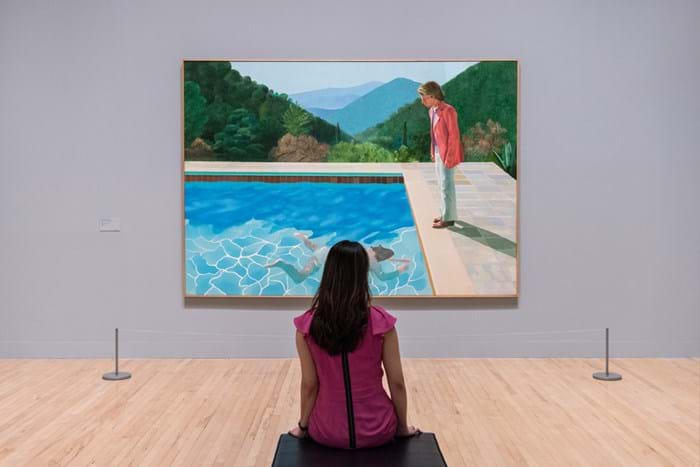
The Tate’s annual report for 2016/17 which was released last week showed that a total of 1113 works entered its collection over the last year.
It also indicated that the institution had lent out 513 works to 113 different venues in the UK – including works taken on tours around the regions such John Constable’s painting Salisbury Cathedral from the Meadows.
One of its recent acquisitions, Le Passeur (The Ferryman) by William Stott of Oldham, is also due to be exhibited in a series of shows in Scotland, England and Wales. The oil painting from 1881 was bought for £1.5m earlier this year with funds donated by the Heritage Lottery Fund, the Art Fund and the Hintze Family Charitable Foundation.
Acquisition Sources
The annual report indicated a growing number of acquisition types and funding sources.
A notable number of works that had entered the Tate’s collection in the last year had been acquired via the Cultural Gifts Scheme – a relatively new scheme that began five years ago allowing donors to receive tax reductions during their lifetimes (as opposed to the Acceptance in Lieu scheme which allows the value of donated works to offset the tax due on inherited estates).
One example of a work acquired under the Cultural Gifts Scheme was The Fountaine Family, a group portrait attributed to John Singleton Copley (1738-1815) which had been in the collection of former director of the Leger Galleries David W Posnett. The oil on canvas from 1776 settled a reported £125,000 of tax according to The Telegraph.
As well as the purchase of works by the likes of contemporary artists such as Ai Weiwei and Yuko Nasaka, the list of acquisitions also included a number of other older works:
- Abraham Cooper (1787-1868), Rupert’s Standard at Marston Moor, an oil on panel from c.1824, purchased with funds provided by Tate Patrons.
- James Tissot (1836-1902), The Wounded Soldier, a watercolour on paper from c.1870 which the artist kept in his studio all his life, probably as a memento.
- Dmitrii Moor (1883-1946), Death to World Imperialism, a lithograph from 1920 and an example of revolutionary propaganda art purchased with funds provided by Tate Members, a private donor, Tate International Council and Art Fund.

The exhibition ‘David Hockney’ at Tate Britain was the second most visited show ever at the gallery. Image Copyright: Joe Humphreys, Tate Photography.
The Tate’s annual report also put visitor numbers at a record level with 8.4m visits made in total across its four sites. The David Hockney exhibition at Tate Britain was the second most popular show in Tate’s history (after Matisse: The Cut-Outs), drawing in 478,082 visitors.





